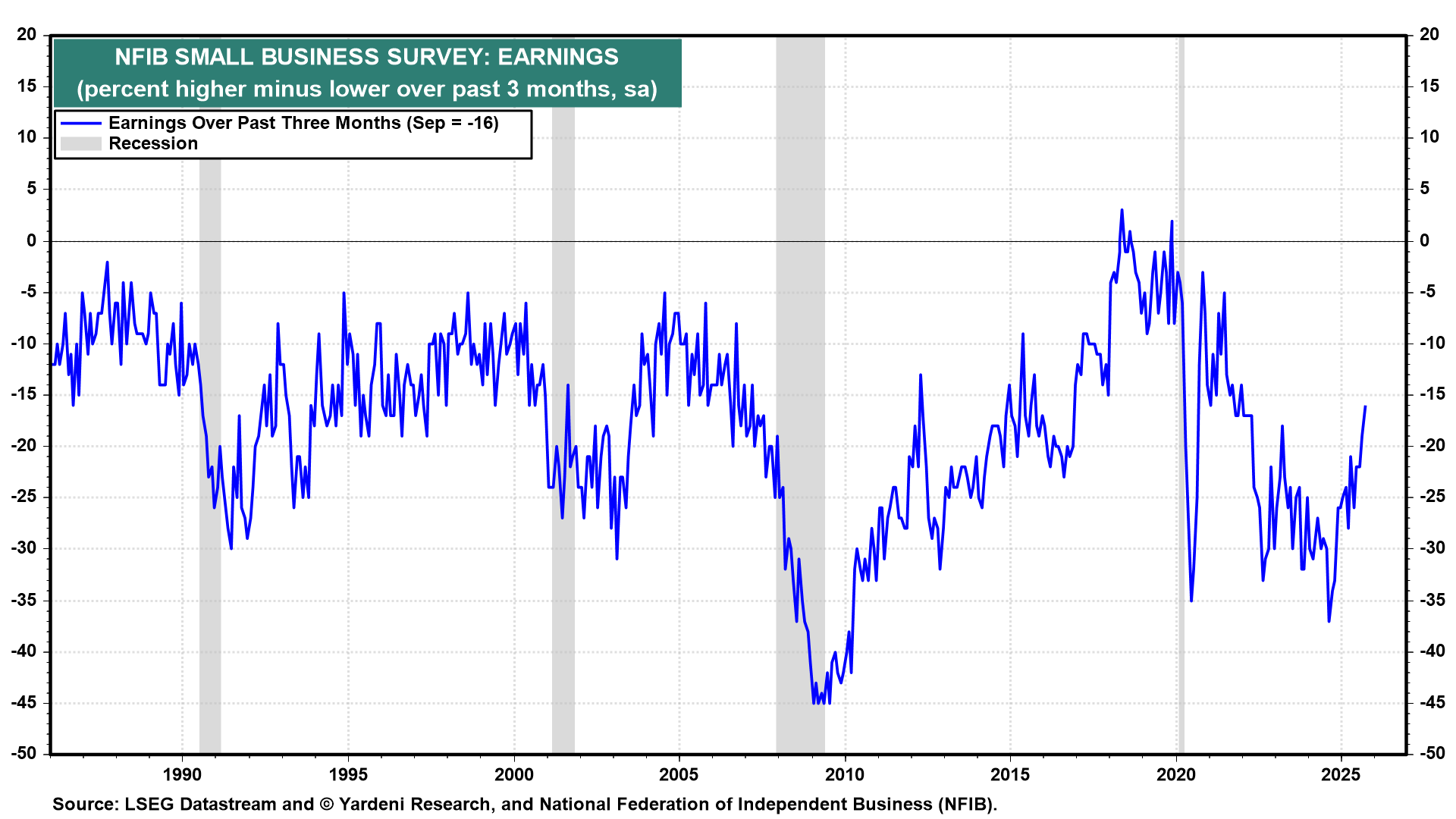Berkshire Hathaway reveals $4.3 billion stake in Alphabet, cuts Apple
It isn’t easy being an economist when the government shutdown shuts off the flow of economic data. Nevertheless, the Fed is still open for business and issuing economic releases. So are several private-sector sources of economic indicators.
On balance, the data we do have suggest that the economy is continuing to grow, the labor market is lackluster, consumers are consuming, and inflation may be stuck around 3.0% y/y. That should give pause to the members of the Federal Open Market Committee when they meet again to decide whether to lower the federal funds rate again on October 29. The available data suggest that the economy remains resilient and continues to pass the latest stress tests, including the government shutdown, federal government layoffs, and the ongoing Trump Tariff Turmoil.
Let’s glean what we can from the available slim pickings:
(1) Inflation
On the inflation front, despite the shutdown, the Bureau of Labor Statistics (BLS) is working on September’s Consumer Price Index (CPI), which will be released on October 24, instead of Wednesday this week. The BLS reportedly will release September’s Producer Price Index tomorrow. According to the Cleveland Fed’s Inflation Nowcasting tracking model, the headline and core CPI inflation rates remained stuck at 3.00% y/y last month, with the former at 2.99% and the latter at 2.96% (Fig. 7).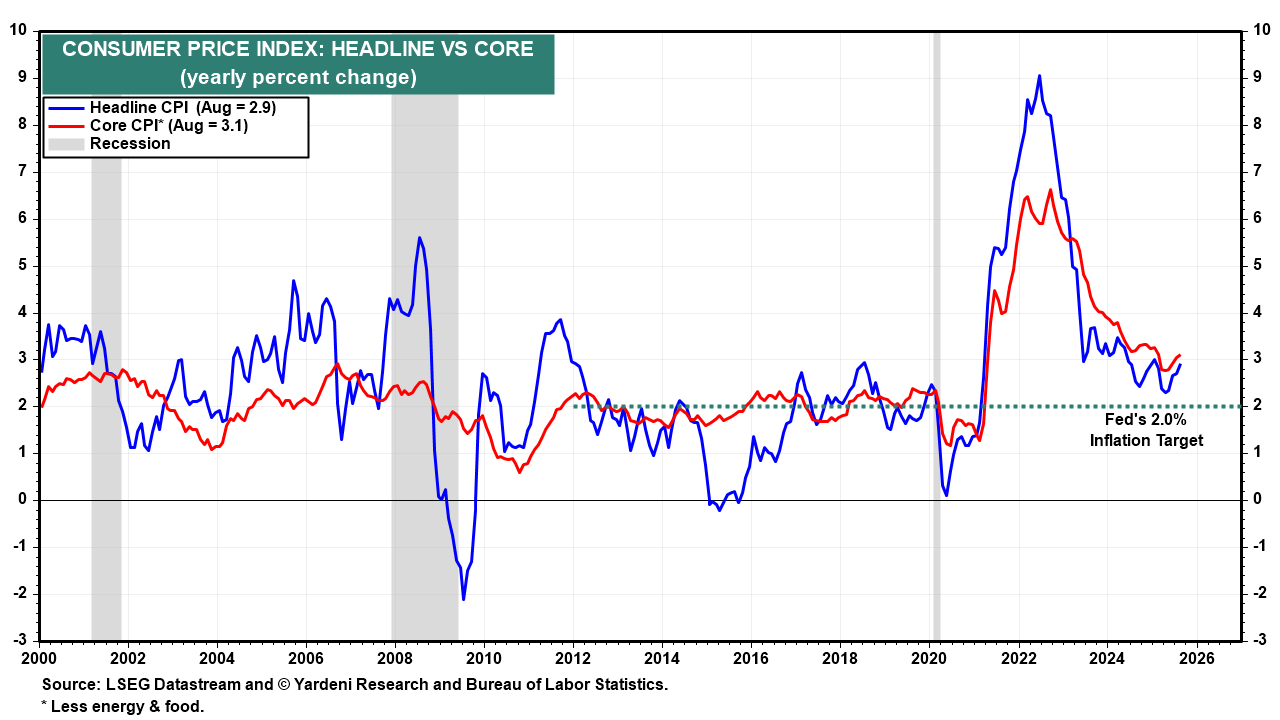
Inflation would have been down to 2.0% by now were it not for Trump’s tariffs, which have boosted the CPI durable goods inflation rate from -4.2% y/y a year ago to 1.9% in August (Fig. 8). Meanwhile, the CPI services inflation rate has been stuck around 4.0% for the past several months, even though rent inflation has been declining.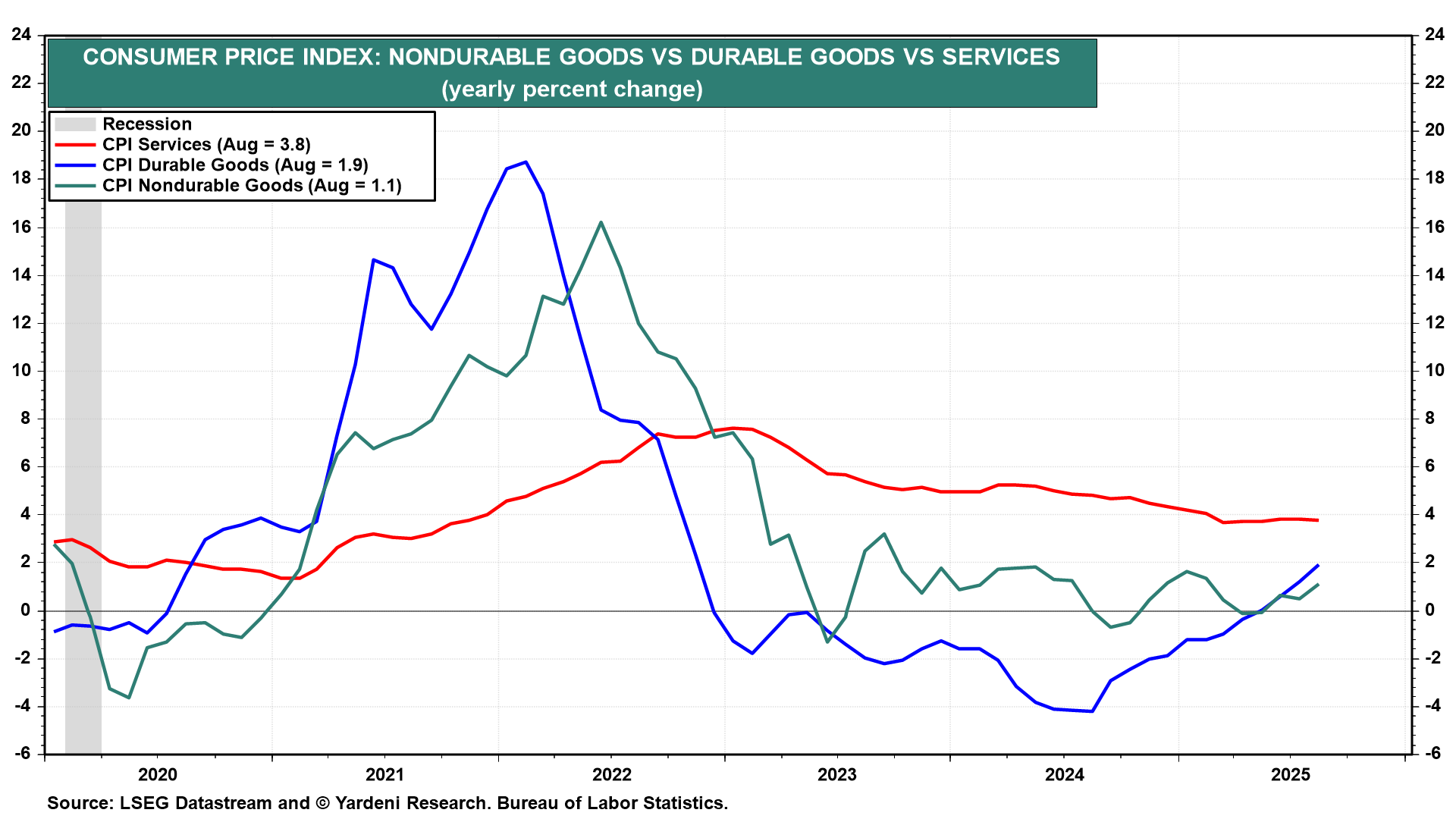
The National Federation of Independent Business’s (NFIB) release on Tuesday of September’s survey of small business owners showed that the percentage of them planning to raise their average selling prices rose slightly to 31%, which remains relatively high compared to its average over time of 24% (Fig. 9).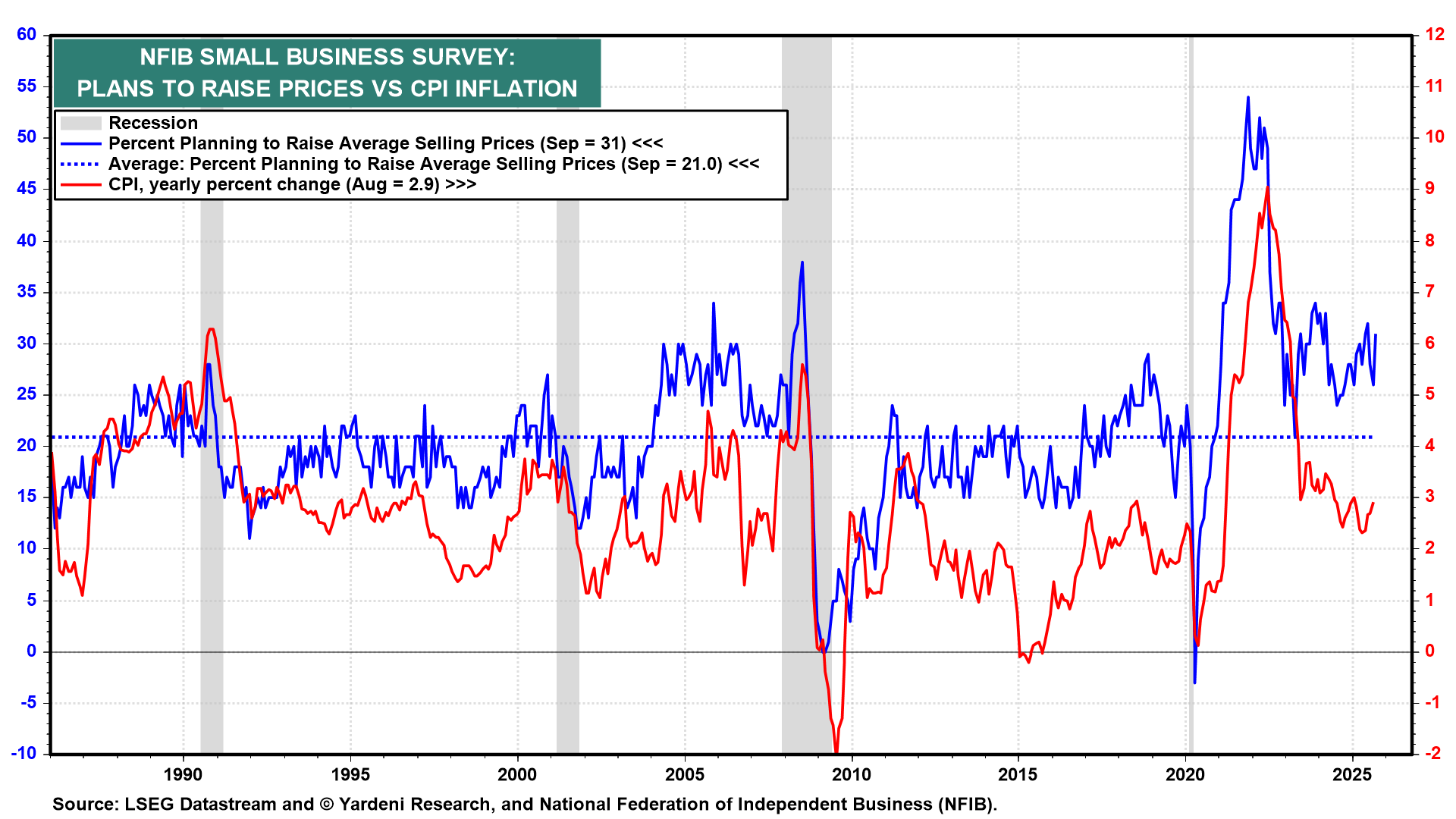
The good news is that inflation is down to the third most important issue for small business owners (12%). The first and second issues are quality of labor (20%) and taxes (17%) (Fig. 10).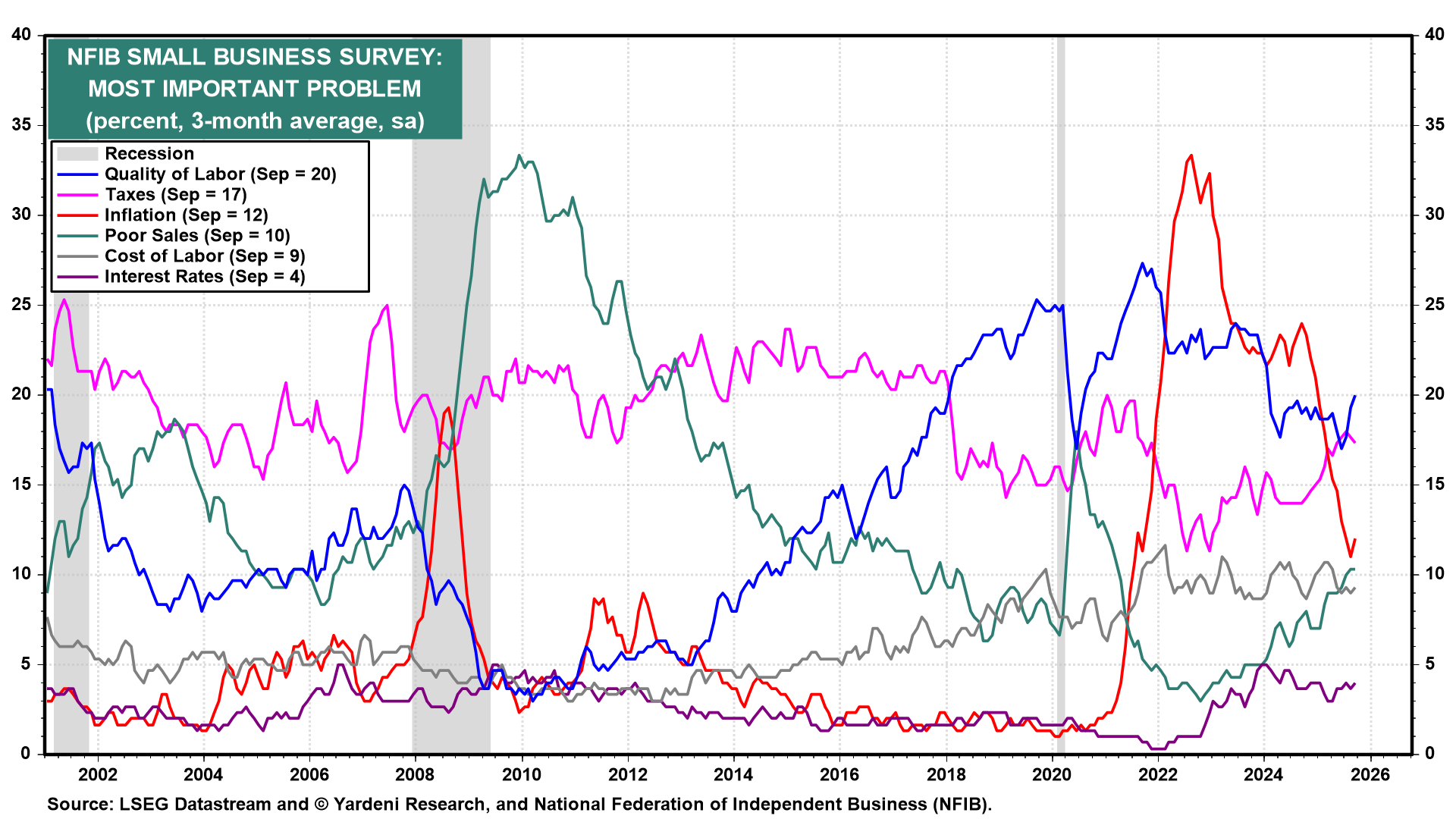
(2) Economic activity
We continue to monitor the weekly S&P 500 forward earnings per share as a coincident indicator of economic activity (Fig. 11). This series is highly correlated with the Index of Coincident Economic Indicators, and it rose to a new record high during the October 9 week.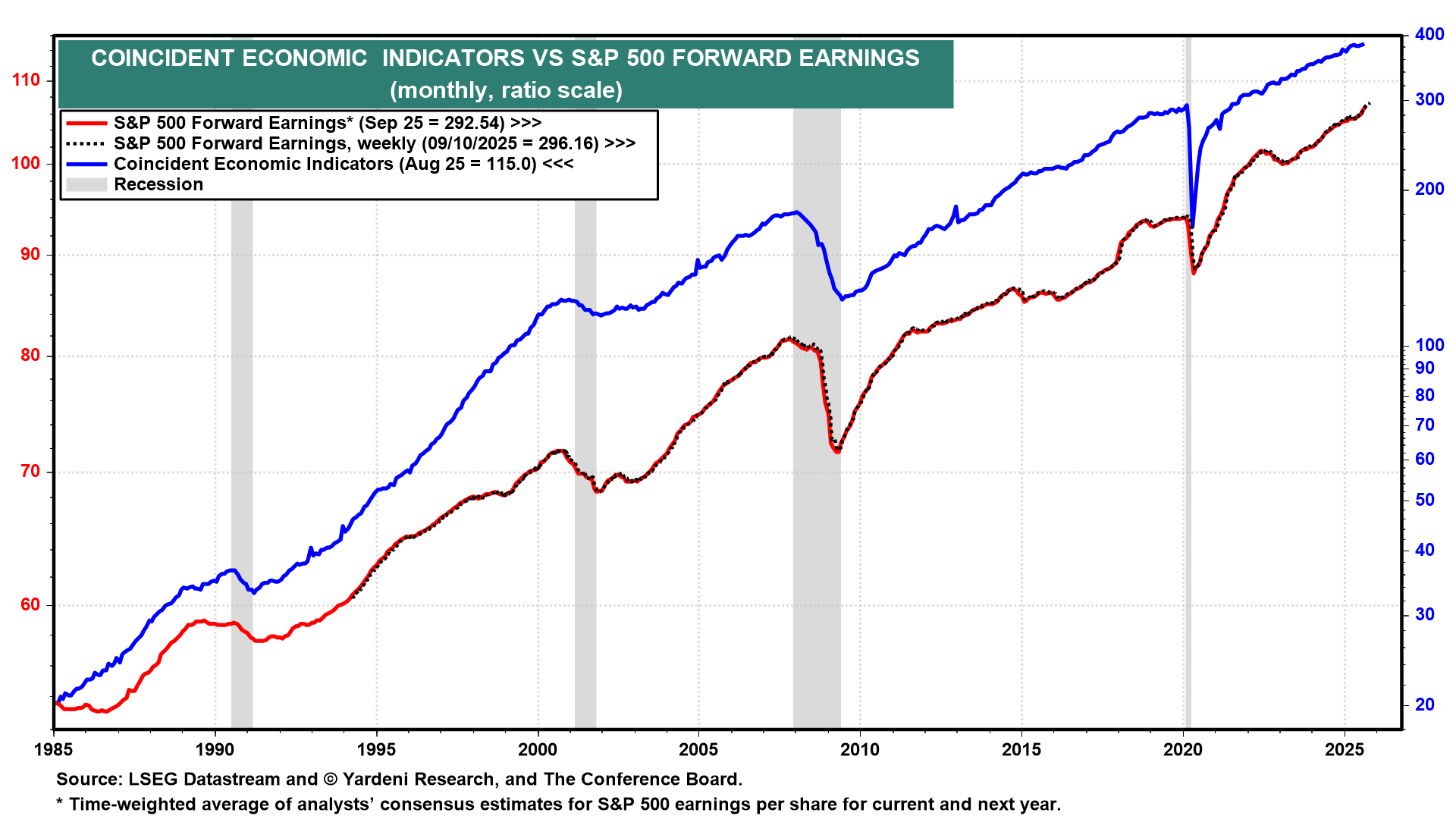
In the NFIB survey for September, the outlook for general business conditions dipped to 23.0% but remained well above its average over time of 3.0% (Fig. 12).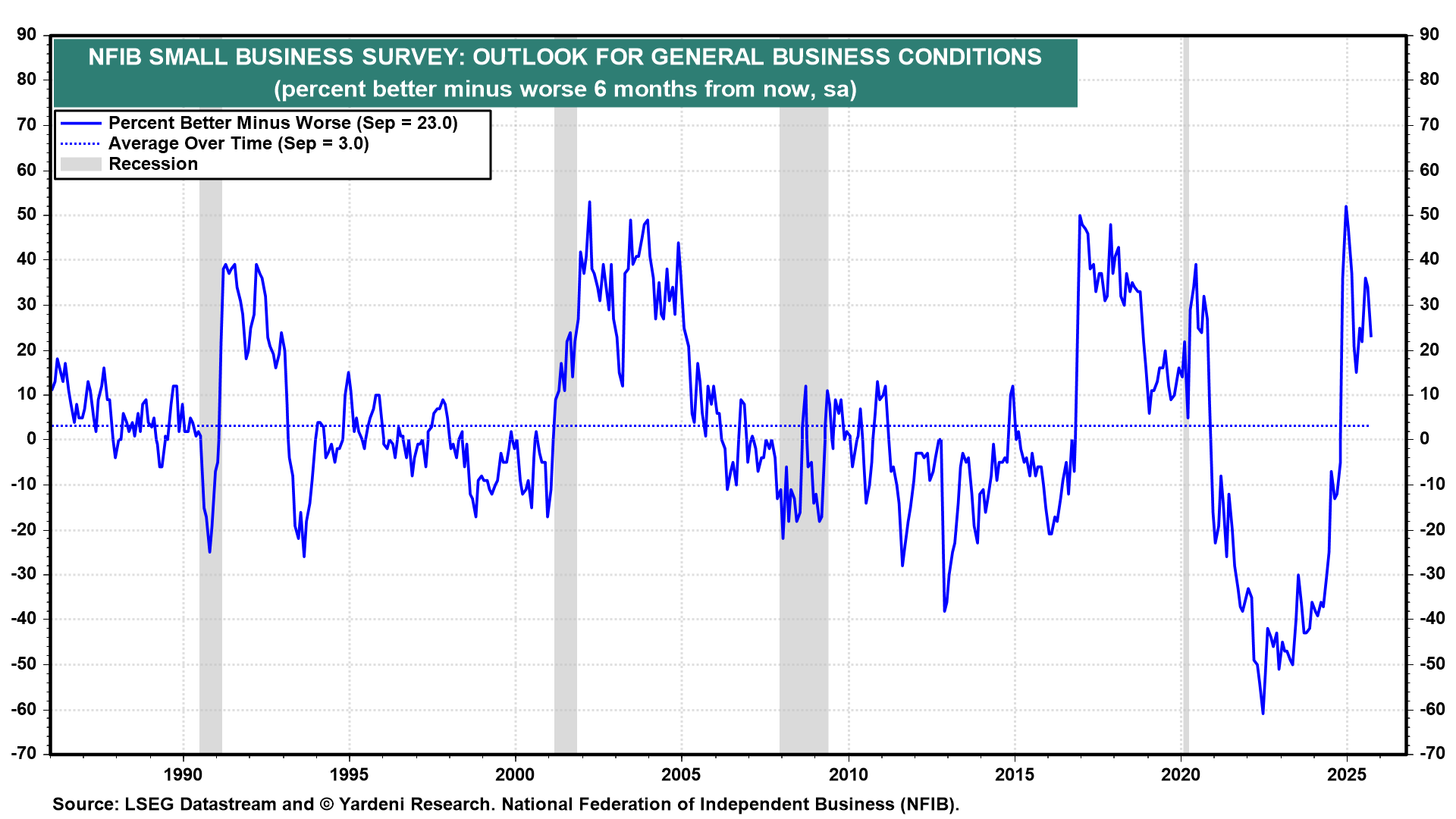
The small business Optimism Index also dipped in September, to 98.8, but that was barely above the 97.9 average over time (Fig. 13).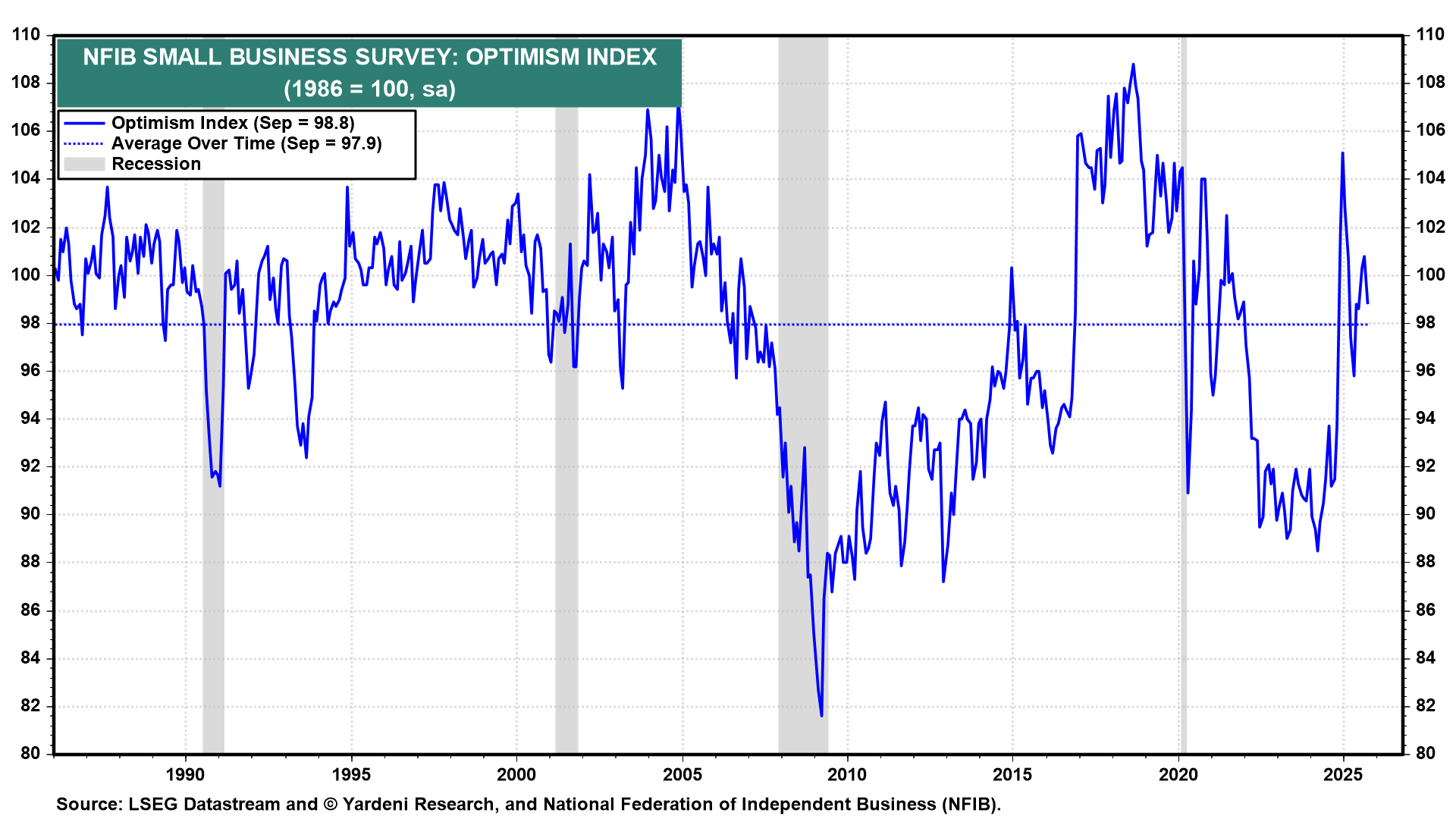
That might be because the survey’s Uncertainty Index remained historically high at 93.0 last month (Fig. 14).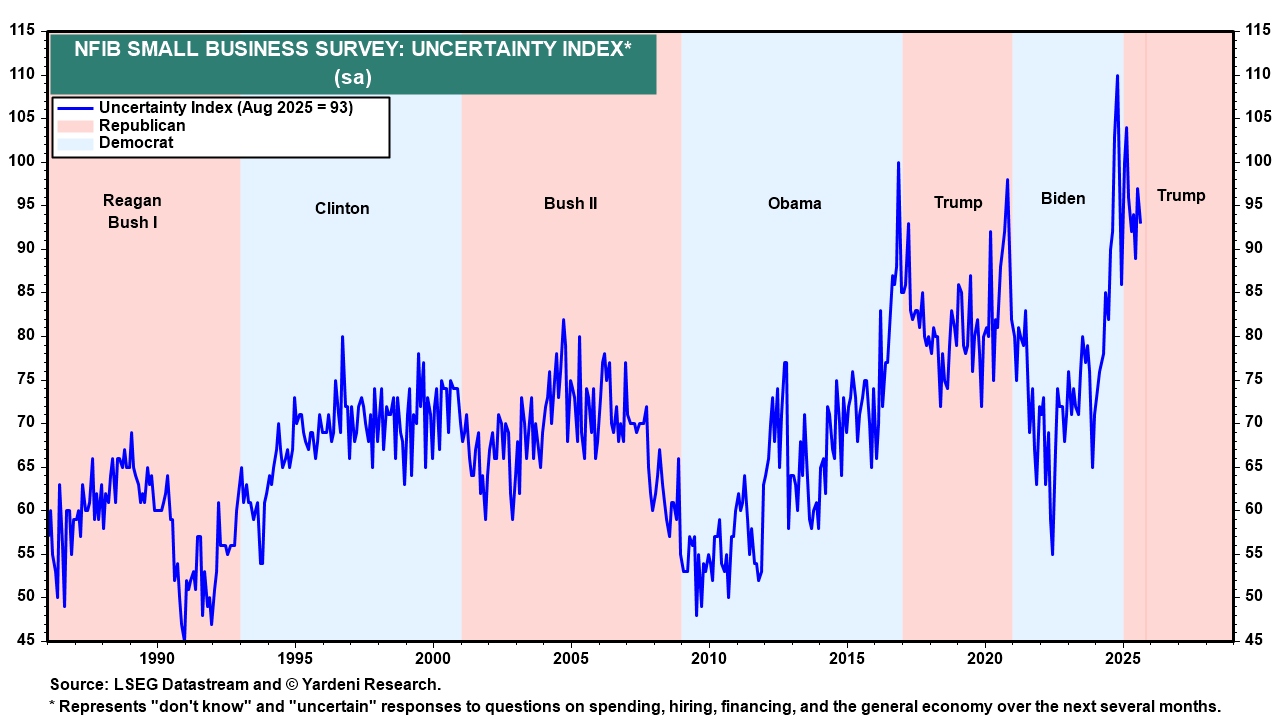
(3) Consumer spending
The weekly Redbook retail sales series rose 5.9% y/y through the October 10 week (Fig. 15).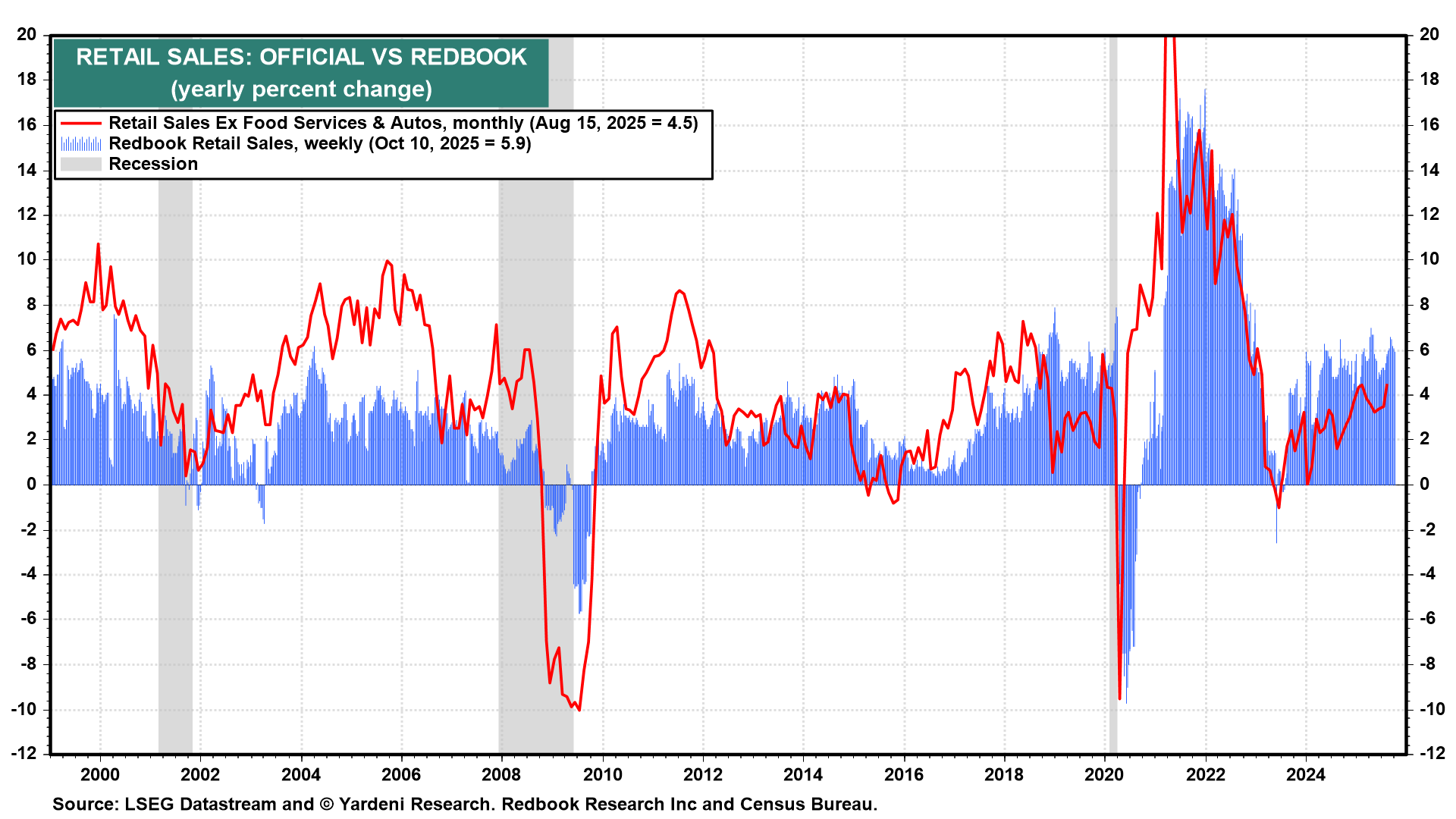
That’s a solid reading for sure. The recent drop in the gasoline nearby futures price suggests that lower pump prices over the rest of the year should boost holiday retail sales (Fig. 16).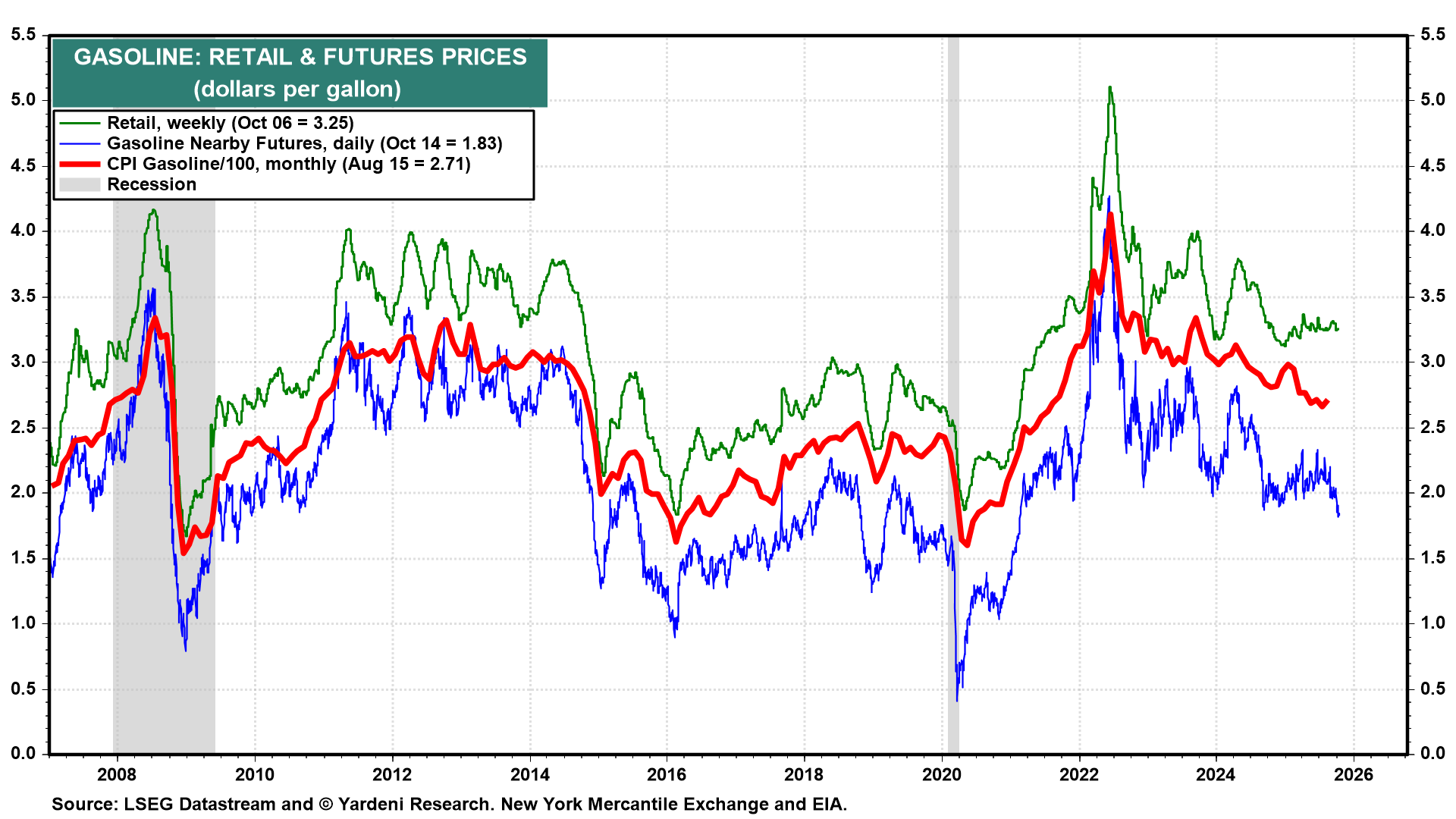
But what about consumer revolving credit, which was down 2.8% in August based on its 12-month moving average (Fig. 17)? That might be a sign of trouble. It might also confirm that higher-income consumers are accounting for more consumer spending and that they pay off their credit card debt sooner than lower-income consumers.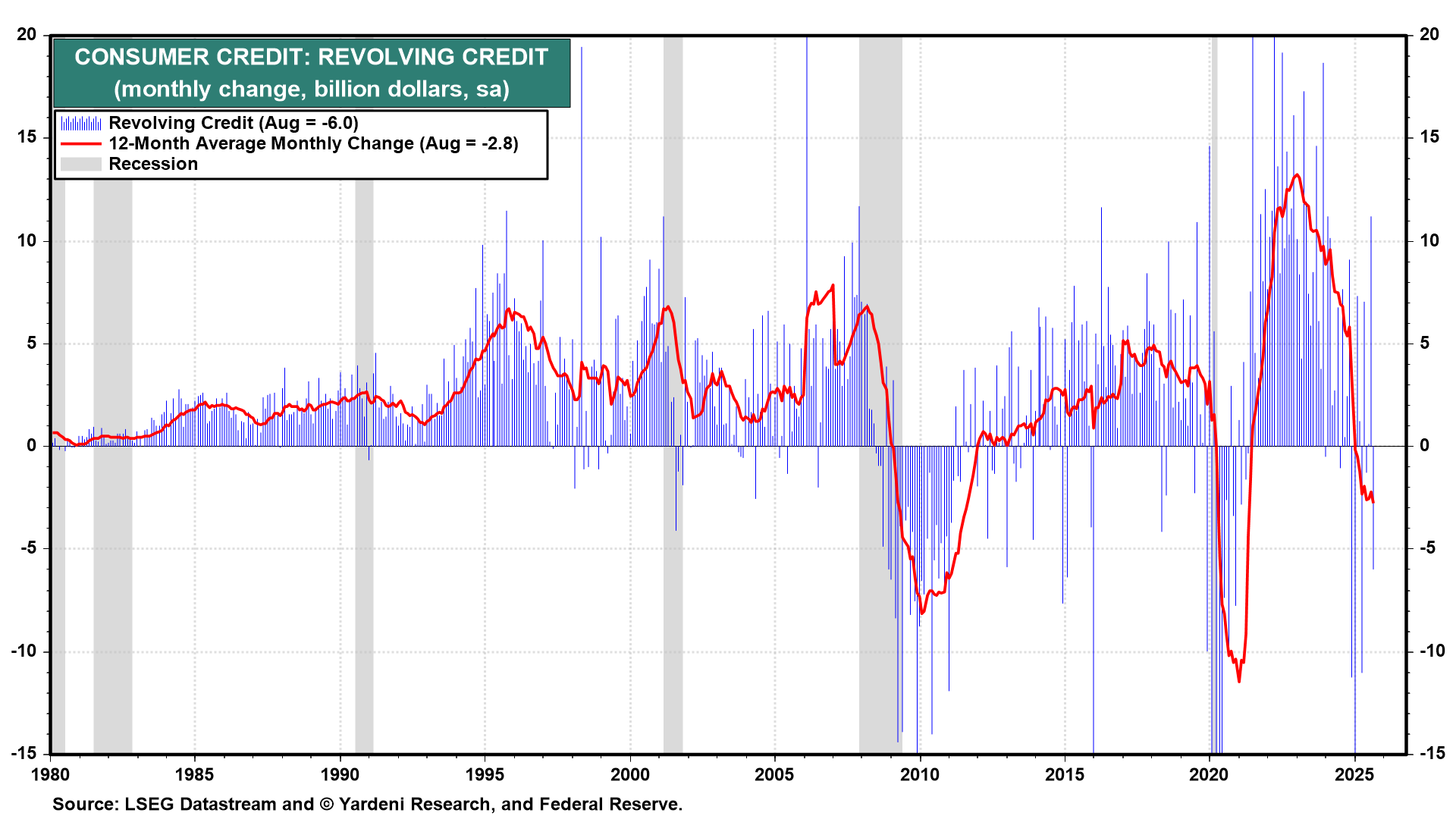
(4) Labor Market
The labor market remains in a funk. It is mostly attributable to a shortage of workers with the skills to match job openings. That’s confirmed by the jump to 50% of small business owners saying so in the NFIB’s September survey (Fig. 18). We expect that this shortage will stimulate the usage of technological innovations to augment the productivity of the labor force. Meanwhile, the NFIB series on job openings remains relatively high, with 32% of small business owners saying they need workers and an uptick to 16% saying they are planning to increase employment.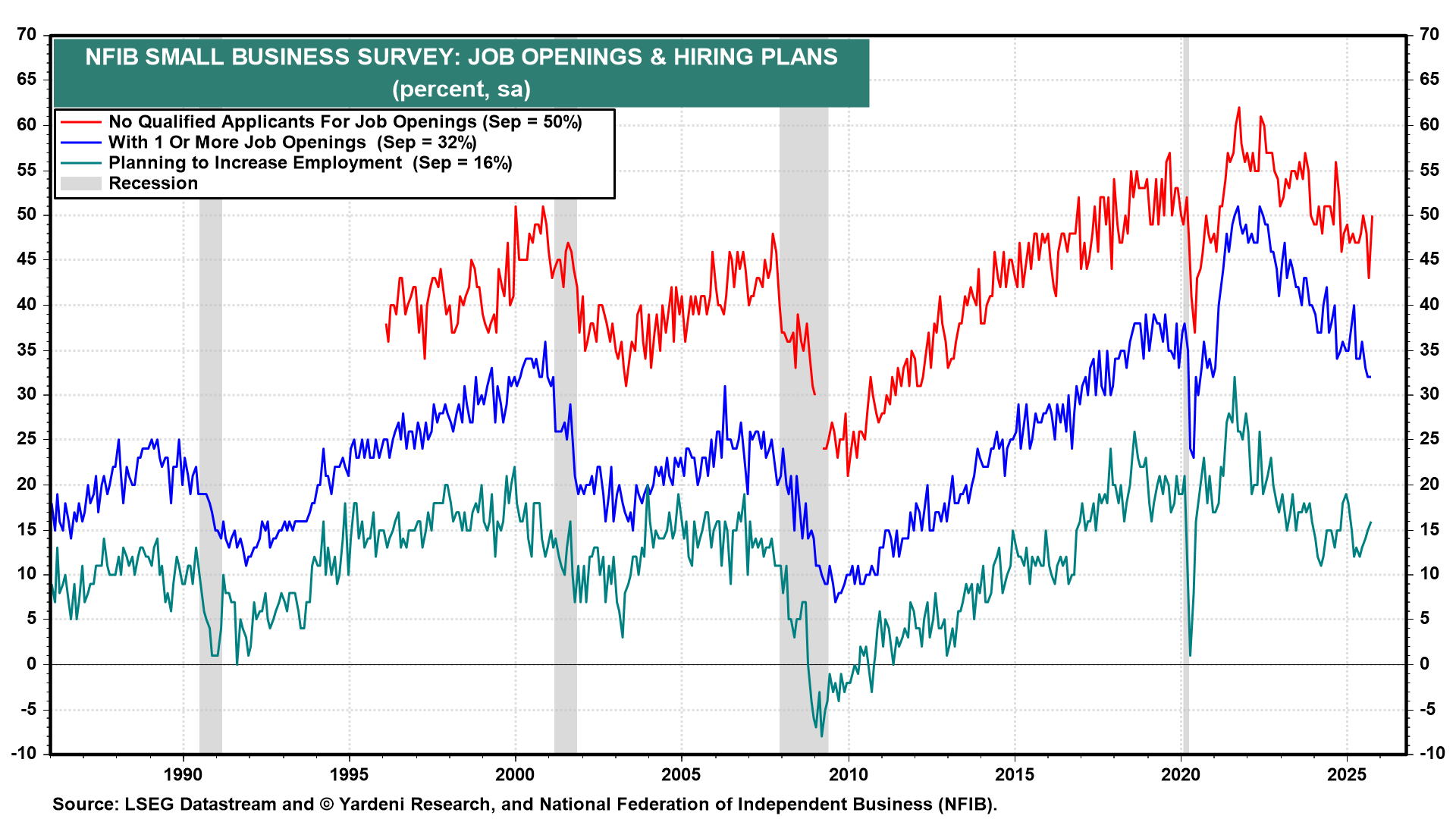
(5) Earnings
As noted above, S&P 500 forward earnings rose to a record high last week, auguring more economic growth. This series has been climbing in record-high territory since late 2023 (Fig. 19).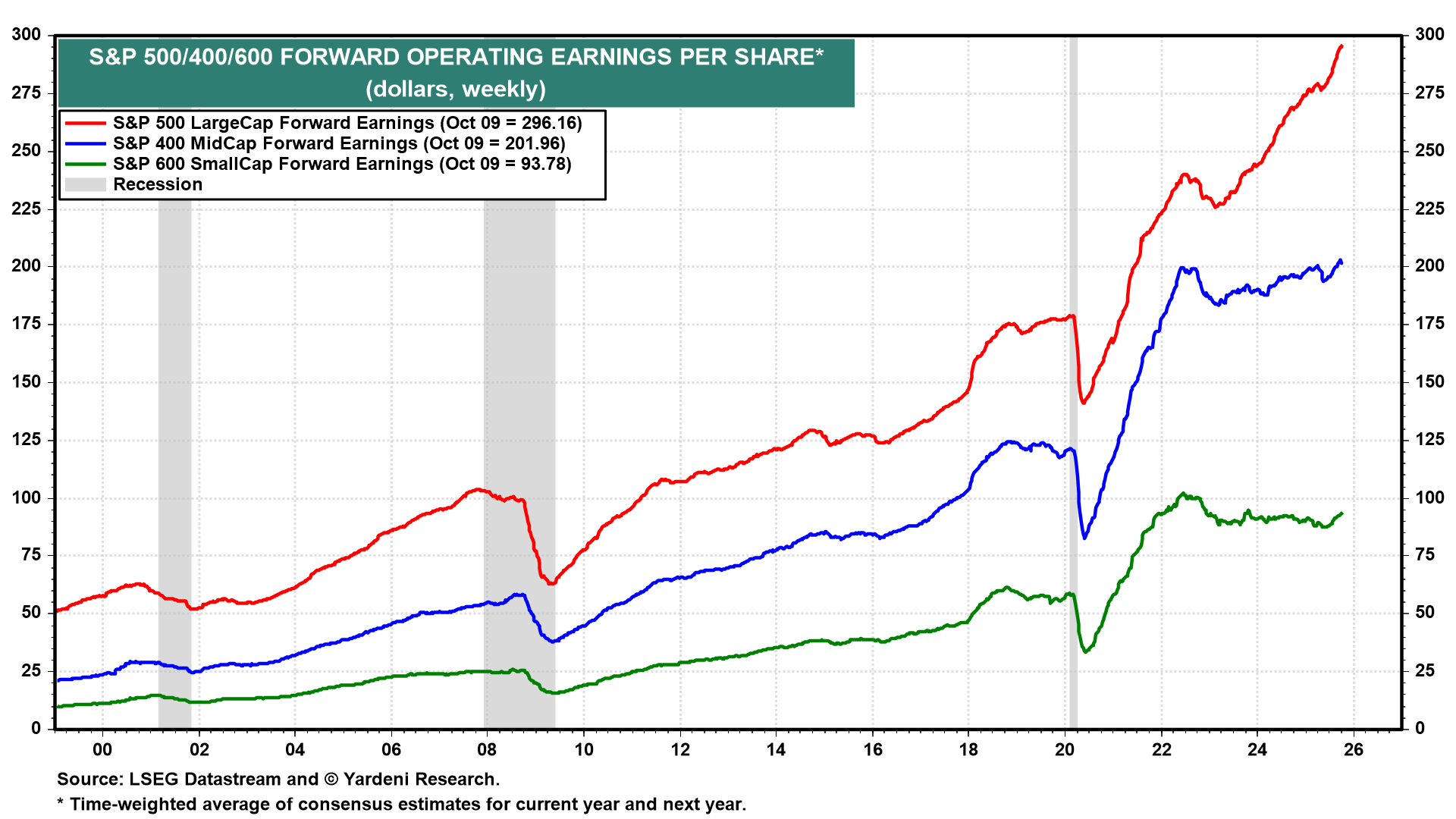
The forward earnings of the S&P 400 MidCaps just rose to a record high over the past couple of weeks. The S&P 600’s forward earnings has been flat since early 2023 and is only now showing some signs of life, but it remains below the record high back then. This improvement is confirmed by the NFIB survey showing that a net -16.0% of small business owners said that earnings have increased over the past three months through September (Fig. 20). That’s actually a significant improvement from -37% during August 2024.